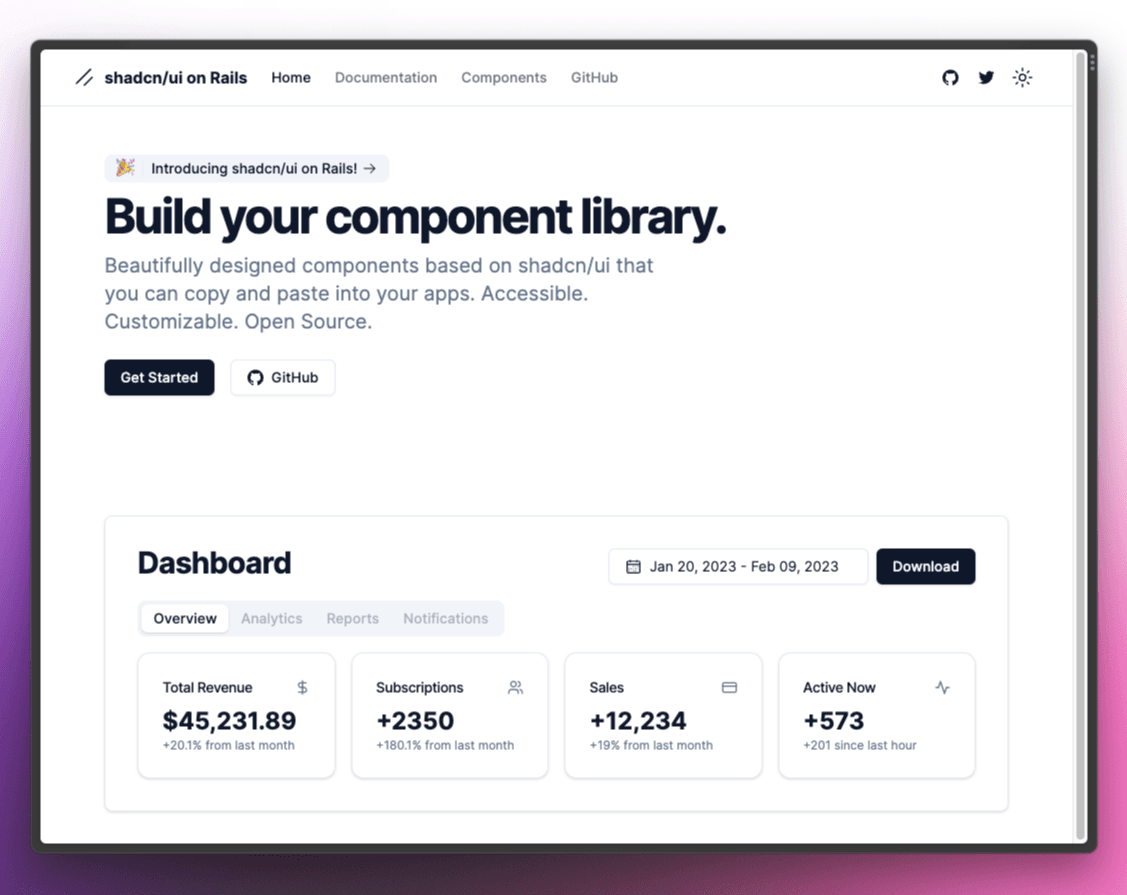
Open Sourced shadcn on Rails
I ported the incredible shadcn/ui to Ruby on Rails, moving all the components over, re-writing the documentaion, and open sourced it as shadcn on Rails.
I'm an engineer, educator, and entrepreneur that has been building digital products for over 20 years with experience in startups, education, technical training, and developer ecosystems.
Thanks to all the incredible people I've worked with

I ported the incredible shadcn/ui to Ruby on Rails, moving all the components over, re-writing the documentaion, and open sourced it as shadcn on Rails.
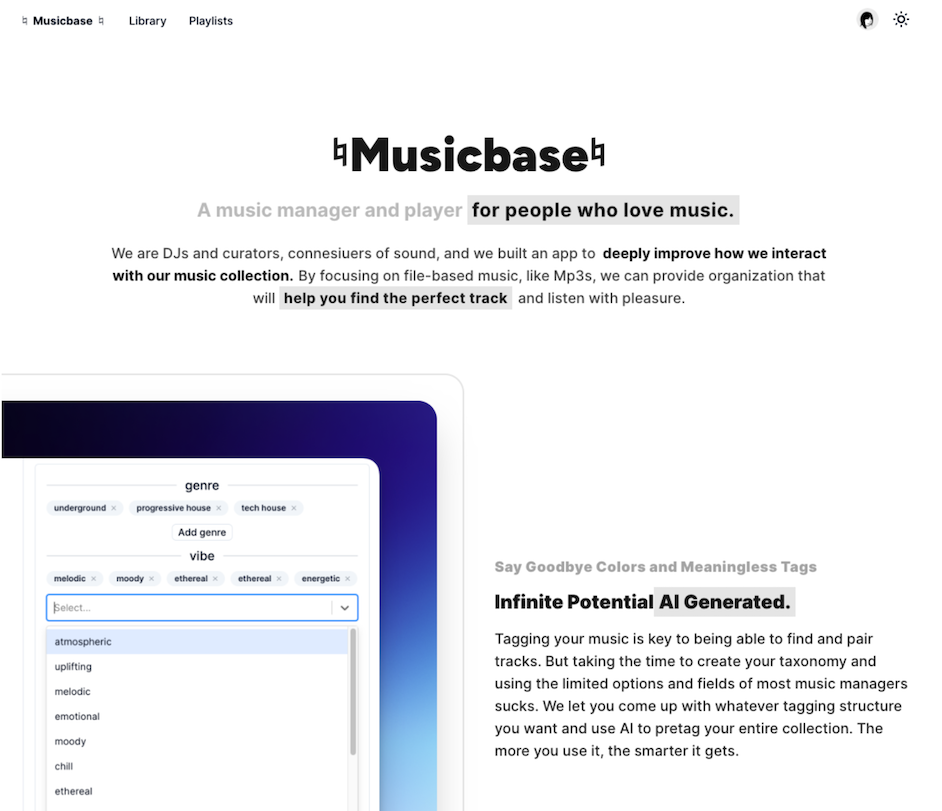
I've been a DJ since I was 19. And since then, managing my music library has been a huge pain. In 2023 I decided to bring my love of music, code, and emerging technologies together to build an AI-powered music manager, library, and suite of applications. This is just a side project but it's been super fun.
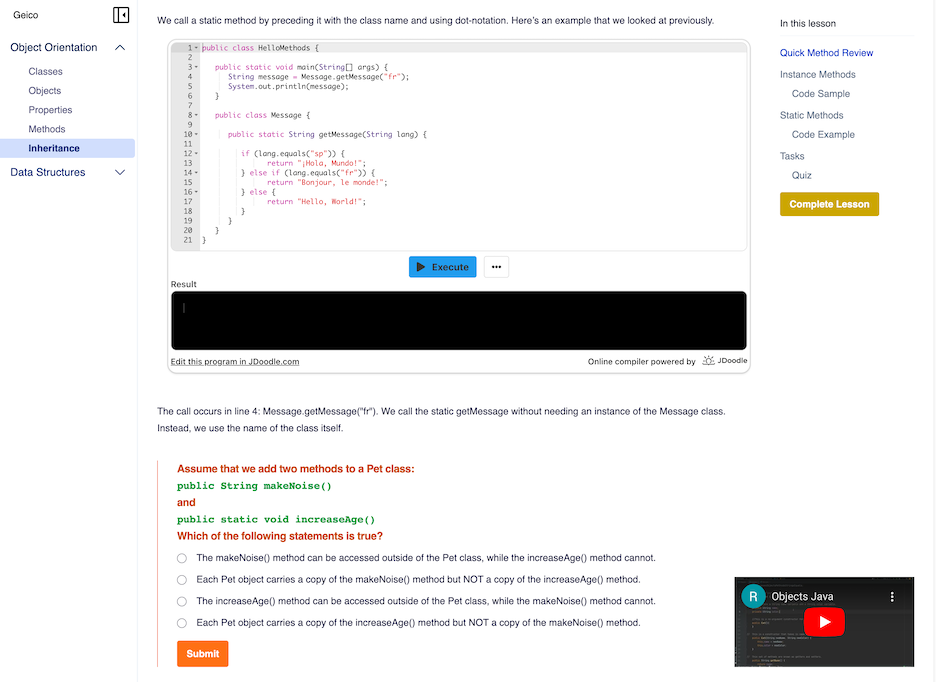
eXa represents the next generation of training at Revature. Providing a modern learning platform to power not only the pre-training courses like RevUP, but the longer, more advanced, technical training conducted at Revature, eXa allows Revature to control quality at scale.
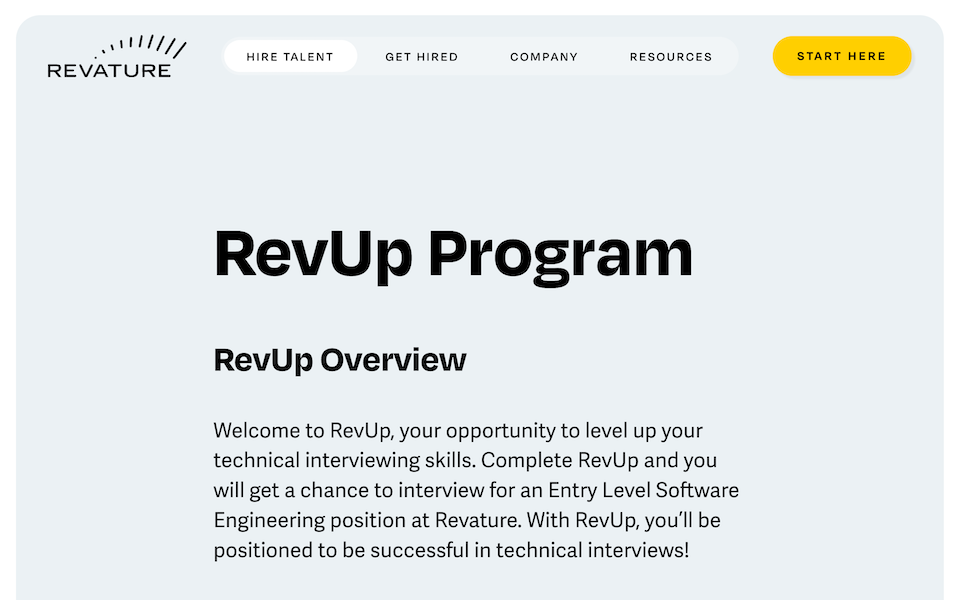
After a few months settling in at Revature, I leveraged my expertise in creating scalable, quality, online learning programs to develop a free course called RevUP. Leveraging Revature's internal training platform that I manage with an awesome team, RevUP allows candidates to prepare for their technical interview with the support of trainers so that they qualify to get hired into our paid training. RevUP has massively increased Revature's ability to hire by upskilling people willing to put in the work.
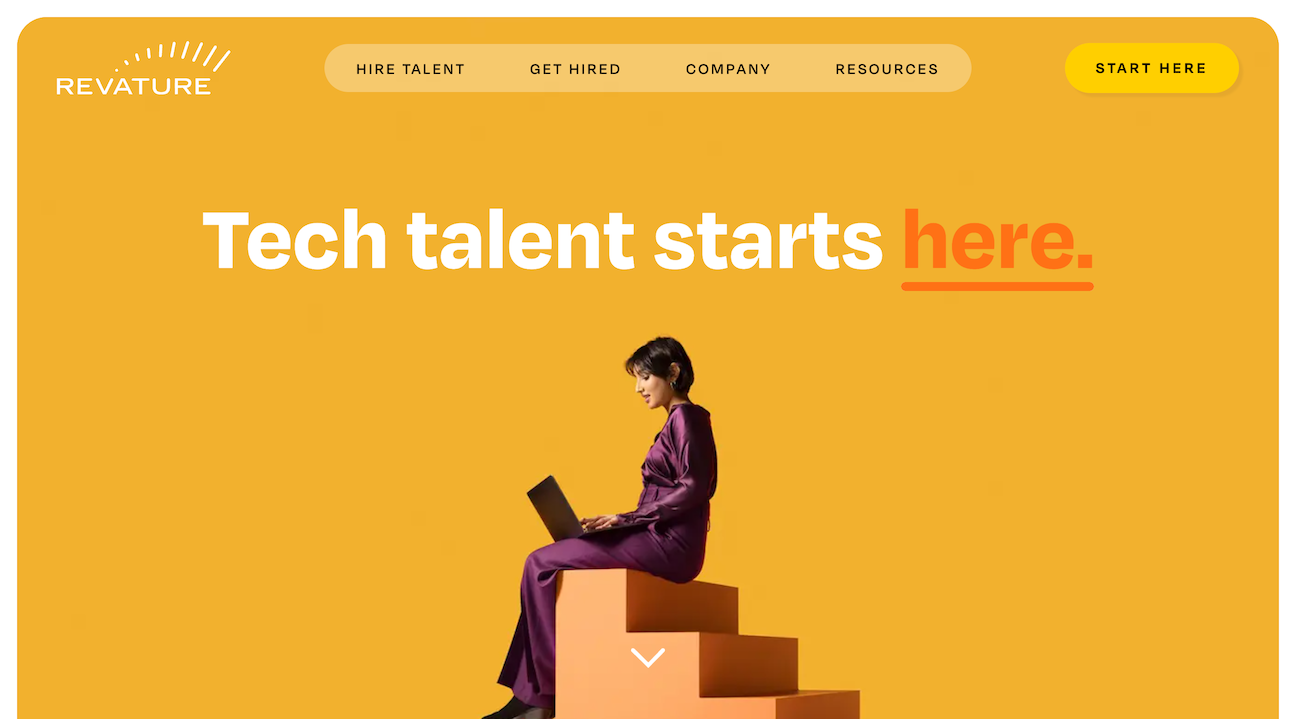
Revature hires people that are interested in careers in technologies and pays them to go through bootcamps to learn the skills that Revature's clients need. Once they finish learning, Revature pairs them with one of their clients and they can work for up to two years as a consultant to gain experience and start their careers in tech. I joined as Chief Product Officer to help Revature leverage technology and pedagogy in to scale their training programs and train more people. Read more about Why I Joined Revature
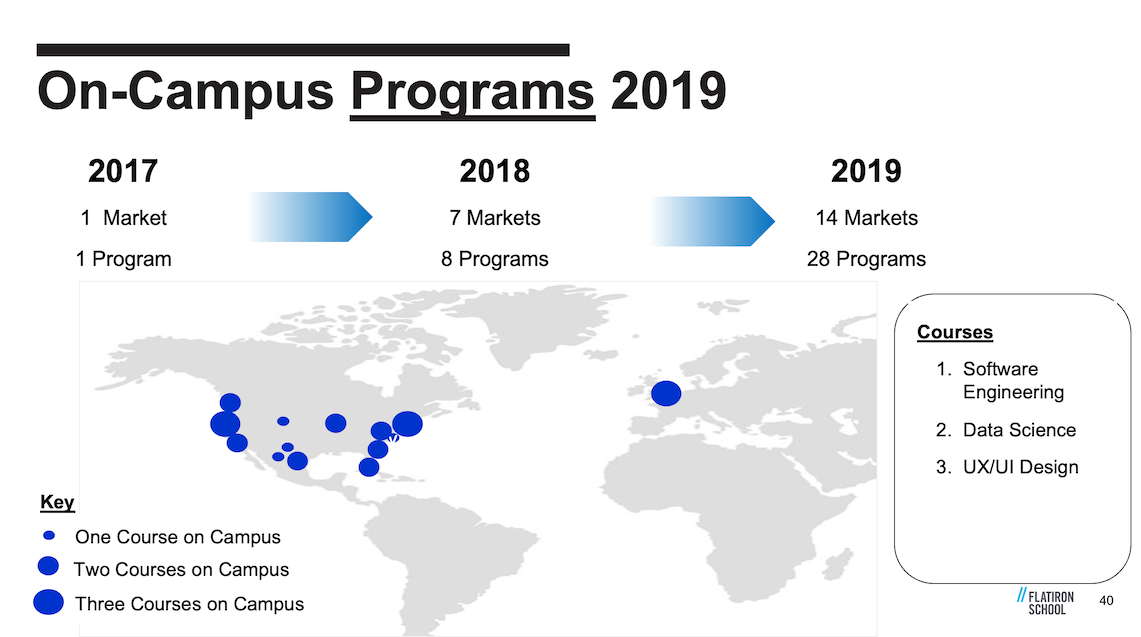
What a roller coaster! We met Adam Neumann and the team at WeWork and shared a vision where community was at the heart of work and learning. With WeWork's massive physical footprint and the thousands of companies in WeWork's looking for tech talent, we saw an opportunity to make Flatiron School global and took it.
Within two years we had opened thirteen campuses world wide, grew the company to over 500 people and hit high eight figures in yearly revenue. A year and a half after that, in June 2020, WeWork sold Flatiron School to Carric Capital and I left to pursue my next adventure.
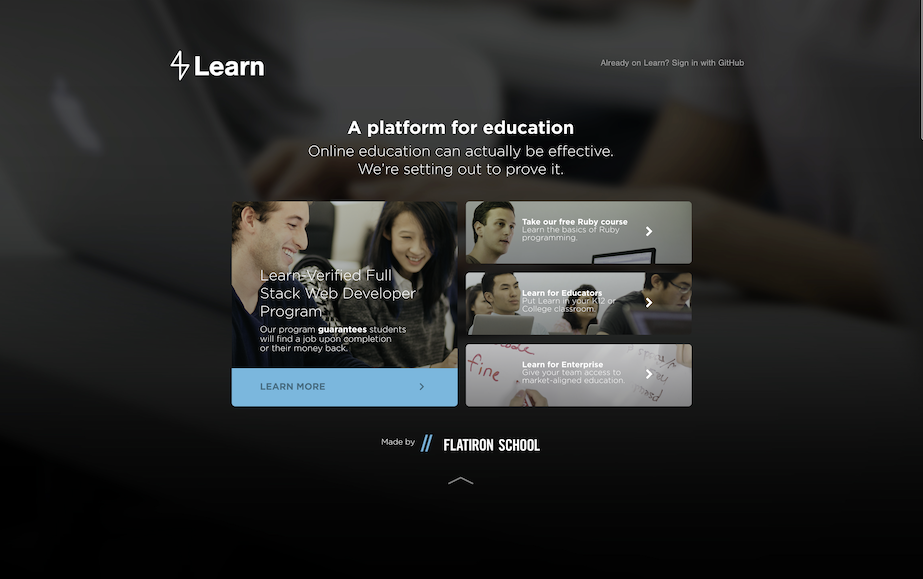
There is so much I want to say about Learn.co that I felt it required it's own section . Learn was the Learning Management System I (and an incredible team) built at Flatiron School to power our classes, especially our online campus. I still believe Learn.co was the most effective learning platform built and it contributed millions in revenue and growth to the school and graduated thousands of people into new careers and lives.
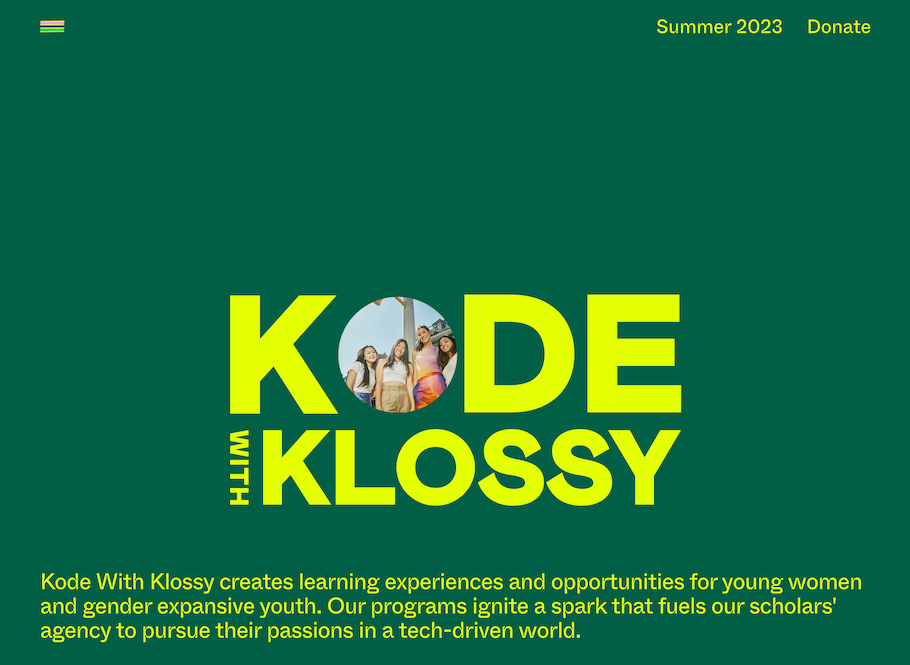
When I started teaching myself to code as a kid, I totally knew that it would one day lead me to the opportunity to work with a super model. Through some miracle, I got the opportunity to learn with Karlie Kloss sometime in 2015 and she was so inspired by code and technology that she wanted to give back to the community. Together we started Kode with Klossy to teach young women how to code and give them the confidence to pursue careers in technology.
I helped design the program and write the curriculum and have been involved in the program ever since as a mentor and advisor. But the real credit goes to Karlie and her team for the incredible work they have done and the women they have impacted. Karlie is an incredible super role model and what she has built over the last seven years with Kode with Klossy surpasses even the wildest dreams of younger Avi reading programming books in Barnes and Nobles.
The Flatiron Annual Report (or FAR as it was known internally) was a microsite we made twice that detailed our progress during the last year. The first one we made actually covered years 2 and 3 of Flatiron School, 2013 and 2014. I was always very proud of the school so getting a chance to focus reasources to telling our story meant a lot to me. And the team just crushed execution on this site.
I think I have the source code somewhere and will try to put it up for posterity, but the video above shows the site and how it worked.
In the first two and a half years at the school we:
Was a pretty exciting time in my life to say the least.
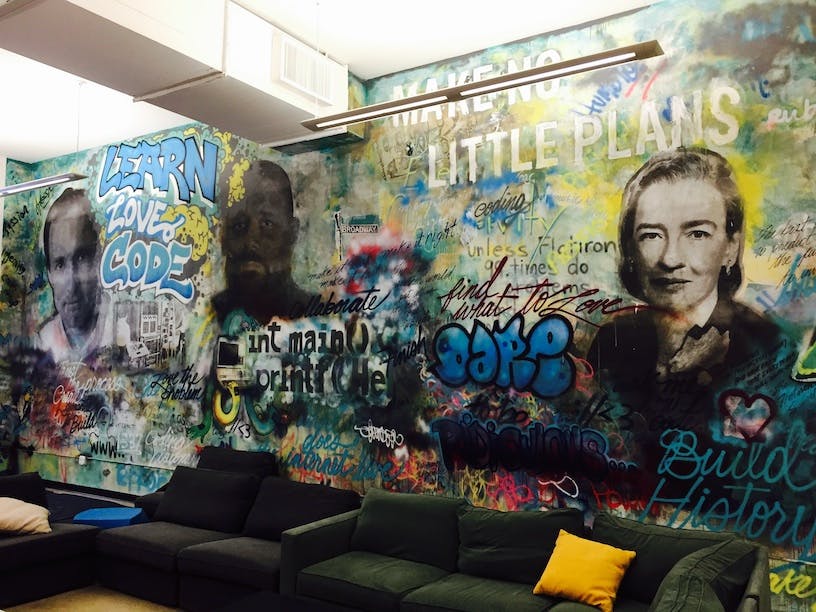
About 6 months into Flatiron School, Adam, who is incredible at applying for things, got us accepted to compete for the Hire and Expand in Lower Manhattan grant, a city competition for $250,000 if you moved your company to Wall st. We won and over the spring and summer began building out our Wall at campus, where the school would be headquartered till today. At the same time, we began getting VC interest in the school and with our expansion downtown and the bootcamp industry exploding, we effortlessly raised 5 million from CRV and Matrix Capital.
Suddenly we were running three courses at a time, I had a faculty of eight instructors, and the school began growing at a rapid clip. Slowly we ended up taking the entire 2nd floor of 11 Broadway for our campus, classrooms, and offices. The centerpiece of our campus was a massive graffiti wall celebrating technology and grit.
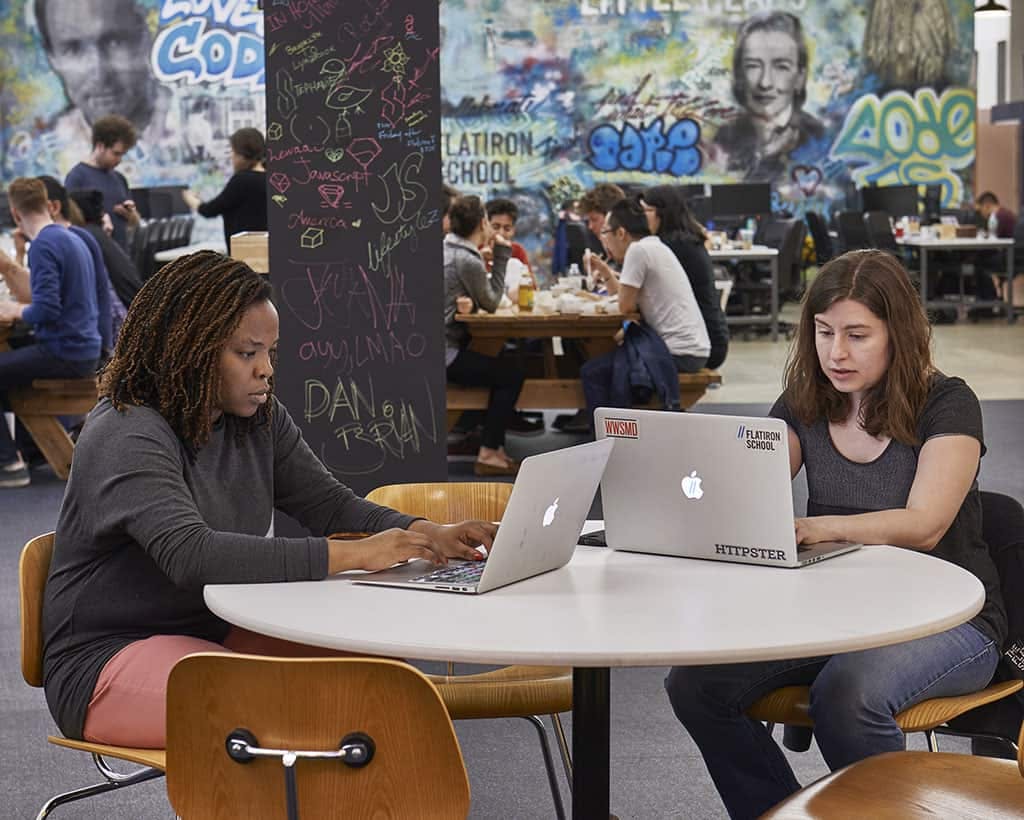
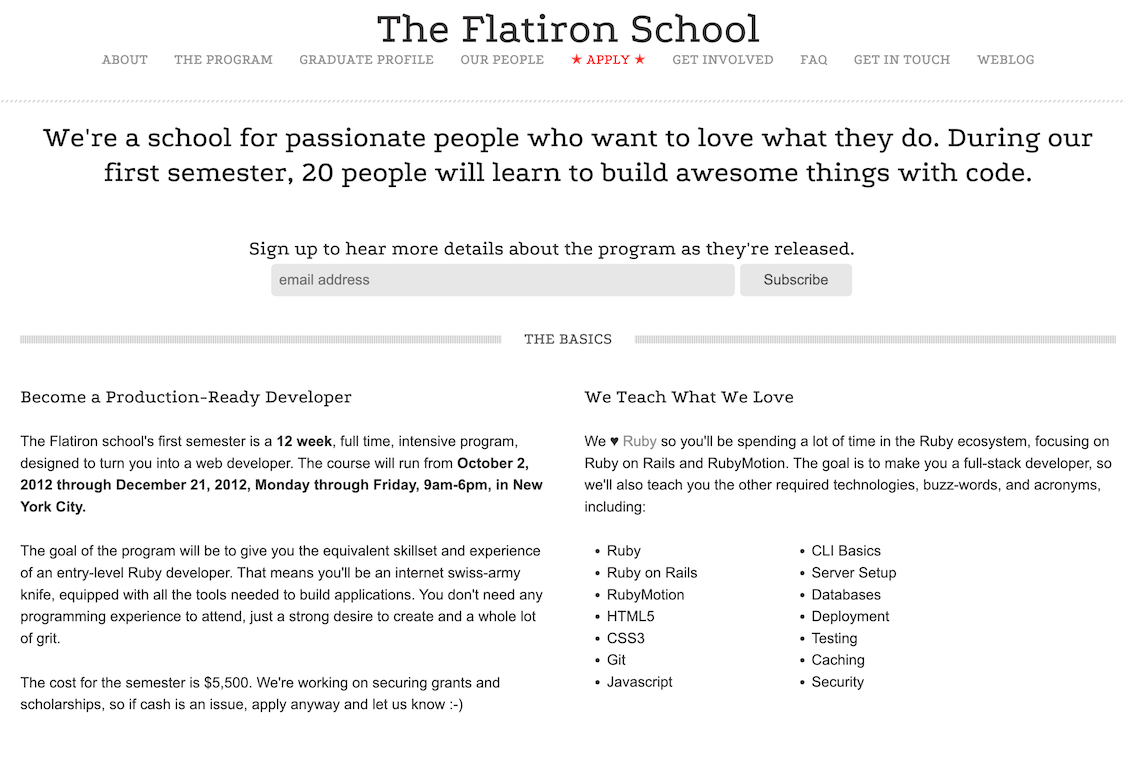
Despite dropping out of college, I found myself teaching people how to code, mentoring them, and getting them jobs after I left Designer Pages. Adam Enbar reached out to me and told me we should start a school. Flatiron School was born. At first it was just me in a loft with 20 grace souls. Making it up as I went led to the most creative period of my life as I dove headfirst into learning, technical training, career development, and education technology.
After 12 weeks I spent a month getting my class jobs before the next semester began. And that’s how it went for the first year. We sold out every class and got most everyone a job in product and engineering. And then things really started growing.
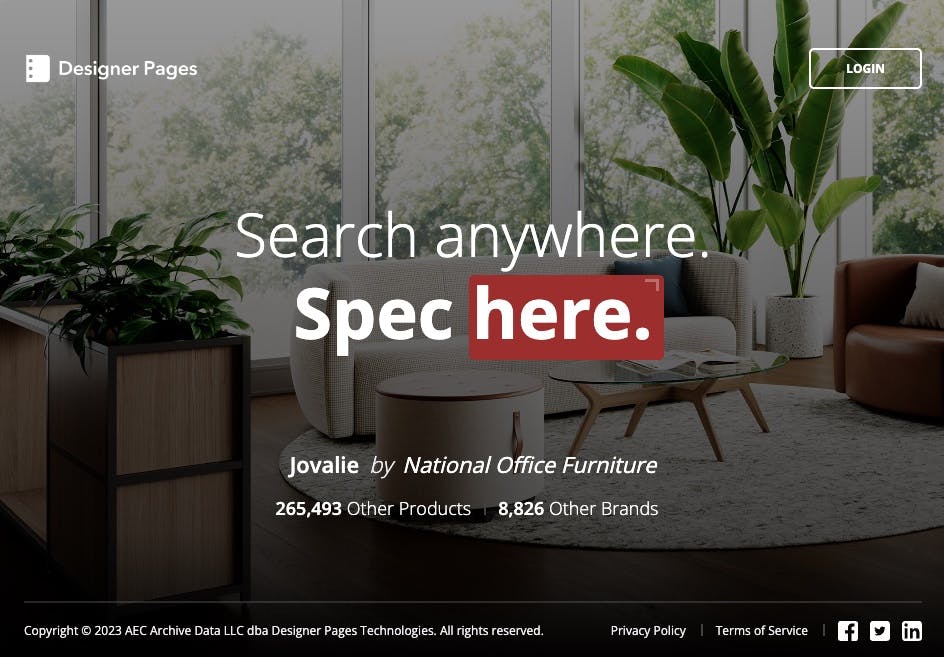
Sometime around the fall of 2008 I left Whitehaven to start my first company with my friend from high school, Jake Slevin. He was an architect at the time and was telling me that basically what he had been doing so far at his first job was specing products. Manually searching through manufacturer catalogs and finding products that were needed in the various projects of the firm and photocopying their spec page.
We decided to build a search engine and project management suite for specing products. We called it Designer Pages. We raised a small seed round from friends and family and started building. The company did pretty well, Jake still runs the company. I'm proud to say that every company I started is still in business and self-sustaining.
I learned so much about startups, collaboration, architecture and design, programming, and myself during this time. And it was at Designer Pages that I started programming in Ruby and Ruby on Rails, which has made a huge difference in my life.
There is so much more to say about Designer Pages but I'll leave it here for now.
Indexed over 1 million products for thousands of manufacturer websites and normalized product metadata to provide functional search across dozens of product attributes and facets. Created an algorithm to serve relevant advertisements within search results based on the results of the search rather than the keyword and filed an approved patent for the process. Grew the company to a team of 12 and over $1 million in revenue. Creat

I dropped out of University of Wisconsin in the middle of my junior year to start working at the Whitehaven Group, a litigation financing firm as lead engineer building an Investment Management System.
What I built could predict the average settlement of personal injury lawsuits using a variety of variables and previous outcomes. The firm would then safley loan money to plantiffs to ensure that the plantiff could hold out for the fair value of their lawsuit and not settle prematurely due to financial hardship. For example, imagine you got injured at work and are going to get a settlement for your injury but meanwhile, you are out of work from your injury and have bills. Insurance companies use this leverage to offer you an early settlment of less money. We loaned you money using essentially your future outcome as collateral.
Besides the algorithm, I built a web-based (in 2005!) application to help process all these loans and track the progress of the lawsuit and loan. I used ASP and then ASP.NET with C# for the web app and deployed it to IIS intranet.
As the firm grew, I moved our call center in-house by building a a CTX using the open source Astrik PBX and integrated it into our advertising and media buys along with the web application agents and analysts used to manage the loans.
I was 21 years old and managing over $60 million in assets in software I built. I stayed at the firm for 3 years and was promoted to Director of Information Technology and managed a team of 3 developers.